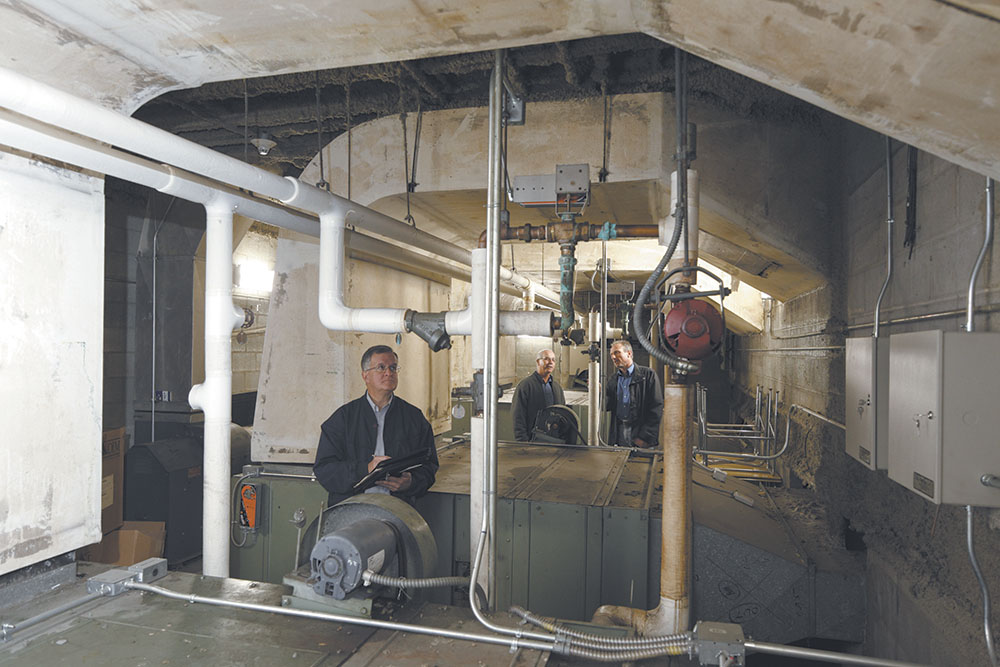In the healthcare environment, decisions to demolish, renovate or build new facilities are not to be taken lightly. Many healthcare systems are struggling with increasingly obsolete buildings, systems and facilities with diminishing budgets, especially in regard to operations and maintenance.
Healthcare regulations surrounding life safety and accessibility are getting stricter and more complex. It is critical for healthcare organizations to know how buildings and systems are performing, where there are optimization opportunities and when a facility’s maintenance, repair and replacement deficiencies might outweigh its monetary value to the organization. The following are five reasons facilities assessments are essential to healthcare systems.
1: Assessments provide a comprehensive understanding of the current state of existing facilities
Healthcare facilities are comprised of hundreds and sometimes thousands of individual components. The goal of any Facility Condition Assessment is to answer the following four key questions for owners:
1) What do we own?
2) What condition is it in?
3) What are the values and liabilities?
4) What is the plan for the future?
Knowing the answer to all four is critical to helping health campuses survive and thrive. At its core, an FCA visually reviews the material conditions, accessibility outside and within the facility, function of operating equipment, performance, estimated remaining useful life based on Building Owners and Managers Association standards and estimated costs for repairs or replacements.
With a thorough examination of each facility, system and component, owners are granted a comprehensive view of the current state of existing facilities so they can begin to prioritize repairs, upgrades and future capital investments.
2: Assessments inform capital planning, budgets and divestment decisions
When it comes to budgeting and forecasting for capital plans, the FCA is an invaluable tool for healthcare systems. CannonDesign’s facilities assessment process uses an industry-wide facility condition index to consider current replacement value against deferred maintenance deficiencies, producing a simple scaled number (0.0-0.5 = GOOD; 0.51-1.00 = DIVEST) that informs owners of the overall status of the existing assets.
The detailed data collected during an FCA becomes an indispensable planning tool, giving owners the power to strategically track facilities and development needs, manage repairs and plan for capital projects in a predictable, efficient manner.
3: Assessments help ensure environments of care
Hospitals and other healthcare facilities are under increasing pressure from The Joint Commission and other entities to ensure facilities meet the stringent requirements of a place for health and healing. A healthcare facility assessment can help identify potential problem areas as related to critical life safety requirements — including emergency management procedures, sterilization and infection control and storage of gas and other hazardous materials — and recommend solutions.
An FCA by its nature also drives prioritization. For example, if a hospital has a leaky roof, that might seem like a priority. After all, it looks bad to have a bucket in the lobby catching dripping water. But if an FCA identifies a life safety code violation, such as the improper transport and storage of hazardous chemotherapy chemicals, it becomes a much higher priority as it could potentially put the entire facility at risk of a shutdown.
4: Assessments support day-to-day decision-making with real-time information
Facilities assessment software is designed to take the loads of data compiled during an assessment and streamline it into a compatible, simple, mobile-friendly environment that can inform day-to-day decision-making. For example, software provides a dynamic and real-time condition model of a health system’s entire portfolio, allowing for prioritization and categorization of assessment data and feeding directly into maintenance and capital project planning and budgeting.
Most software on the market provides a mobile app, where users can view pre-loaded overviews, analyses, building biographies and deficiency condition reports from virtually anywhere, and upload photos, add comments and view estimated repair costs as they go through their day-to-day work.
5: Assessments help ensure compliance with the Americans with Disabilities Act
As indicated by the 2010 ADA Standards for Accessible Design, accessibility of doctors’ offices, clinics and other healthcare providers is essential to providing medical care to people with disabilities. Non-compliance can cause organizations in any industry to become entangled in time- and resource-consuming litigation and healthcare organizations are no exception.
An ADA-focused facilities assessment or audit provides owners with information on how their facilities compare with ADA accessibility standards, to what extent they need to be improved and what level of investment is needed for improvements. Experienced ADA assessors know exactly what to look for in terms of site accessibility, building accessibility, access to building services, restrooms and communication features to help ensure an organization does not end up in suit due to failure to comply. All healthcare systems need to assess and review how to mitigate liability and reduce risk related to accessibility.
Keeping tabs on all of the components, systems and buildings within a complex healthcare system can be a challenge, especially as mergers and acquisitions abound, reductions in O&M staff are commonplace and codes are continually updated and expanded upon.
Commissioning a comprehensive facilities assessment every five years or so is an investment that benefits any health system as they focus on providing a positive patient experience and remaining in compliance with all necessary regulations. All condition assessments are a partnership and once prioritized can result in a minimum 20 percent reduction in maintenance costs once the capital improvement plan is implemented.




